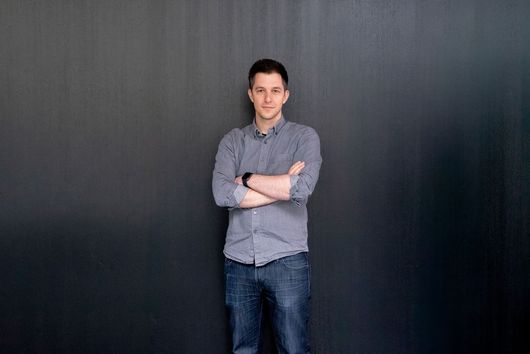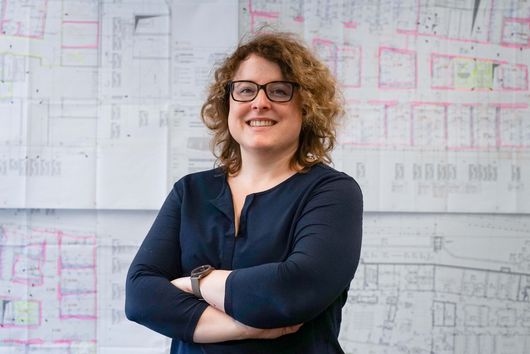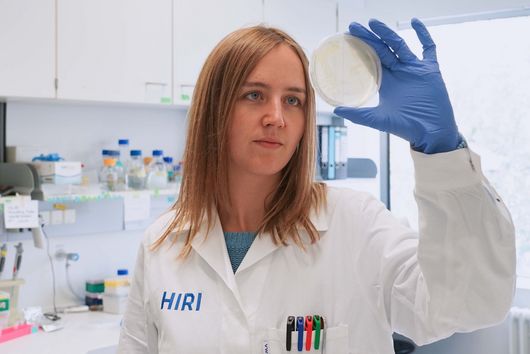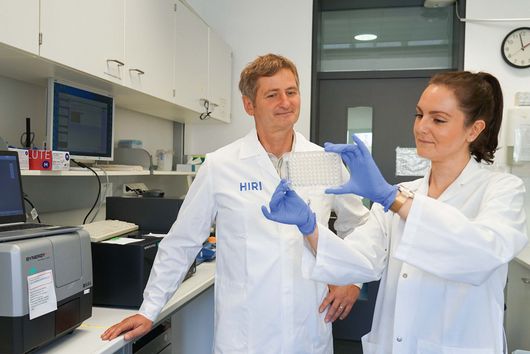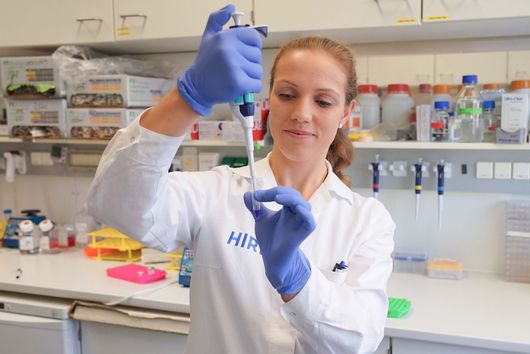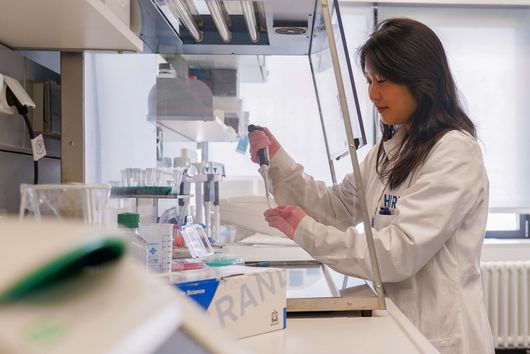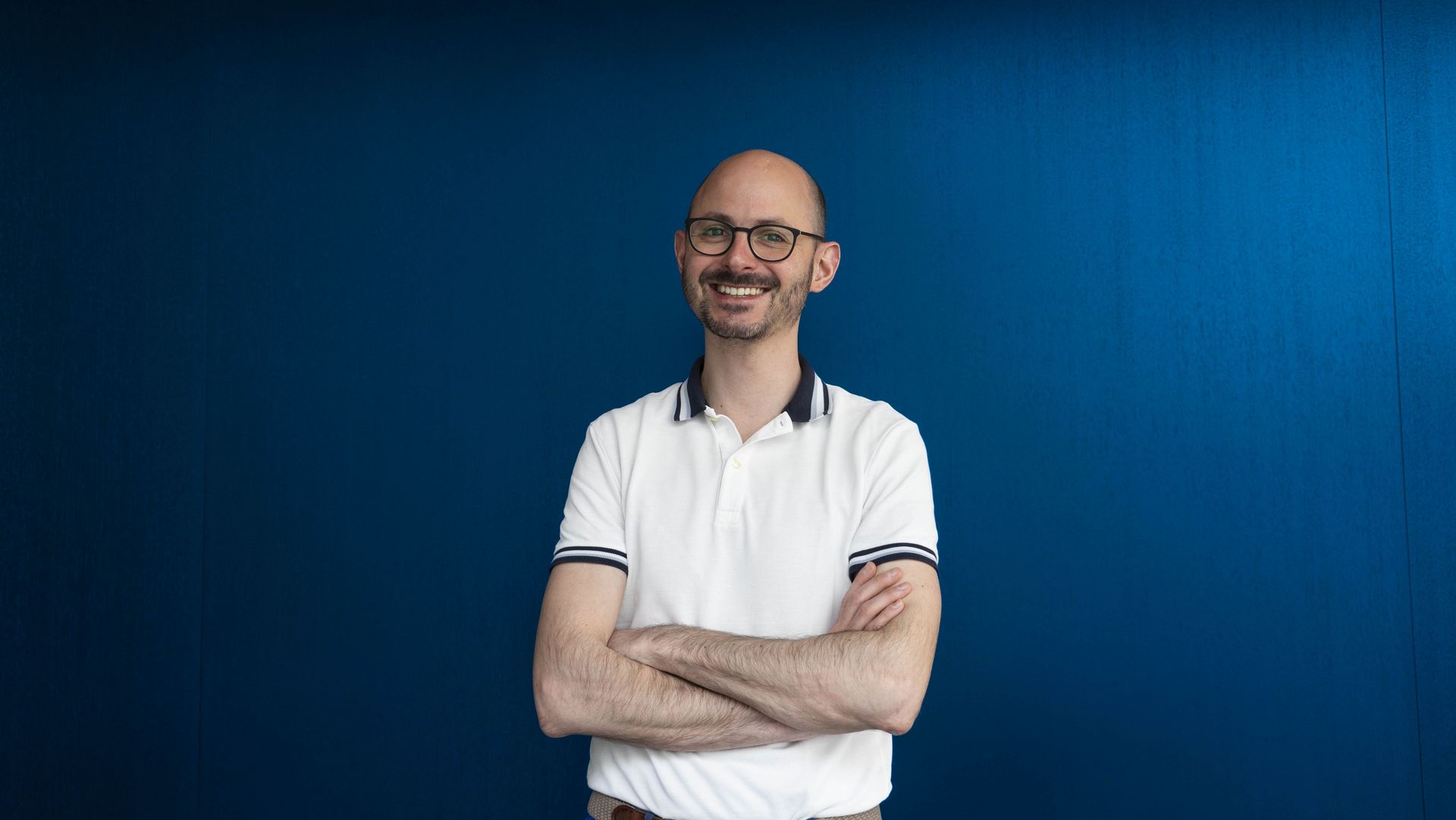
Locating the hiding places of pathogens
Emmanuel Saliba has his eye on individual cells
Anyone who meets Emmanuel Saliba for an initial conversation thinks right away: this must be him, the prototype of a bon vivant. After a short time, however, he reveals himself to be not only a friendly Frenchman but also a passionate scientist with a razor-sharp mind. “We are looking for the bad guys,” he answers succinctly when asked about the research carried out in his lab. There, his team uses single-cell analysis to track down the hiding places of pathogens in our bodies.
Often, just a few bacteria or viruses are enough to drive an infectious disease. In this context, Saliba uses the example of gastrointestinal pathogens and long COVID: “Some bacteria and viruses can hide inside our own immune cells and there they can survive therapies unnoticed. Once treatment is completed, the disease can break out again.” This is a common problem with chronic infections, which afflict millions of people worldwide. Those who want to develop new drugs for these diseases must first get hold of the individual resistant pathogens. The methods being developed by Saliba’s lab are tailored to do just that. “We use RNA as a unique fingerprint of cells to understand disease progression.”
“We use RNA as a unique fingerprint of cells to understand disease progression.”
Emmanuel Saliba
Over the past three years, the Saliba lab made tremendous progress to understand the underlying basis of COVID-19 disease in critically ill patients. “Critically ill patients cannot breathe anymore and their organs start to fail. Single-cell analysis has helped us to better understand why and how their lungs are totally destroyed. This allows us to understand this complex disease cell by cell, which could lead to new treatment options,” Emmanuel says. But all of a sudden, he turns away as the phone rings; another cooperation request from the university hospital awaits his response.

